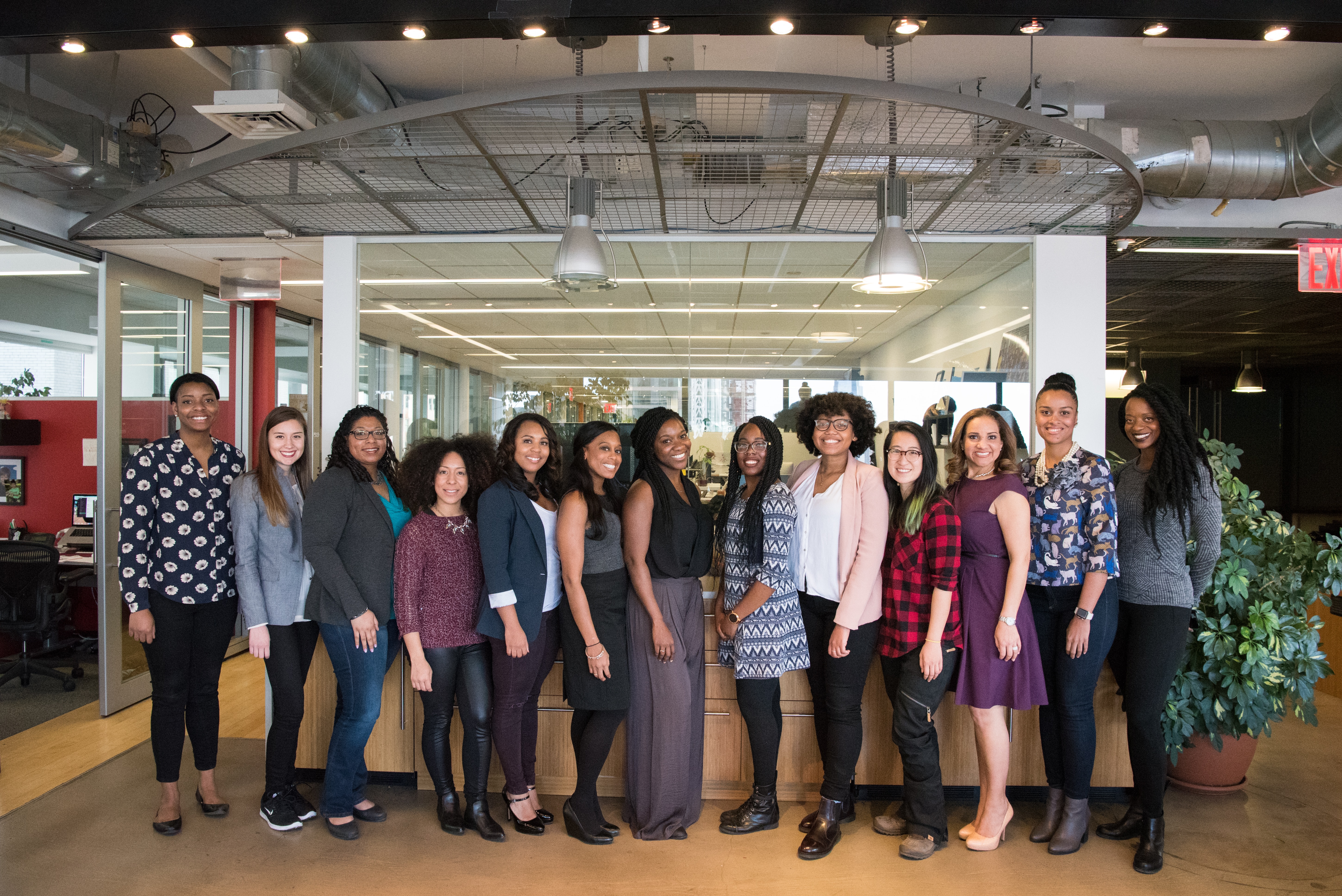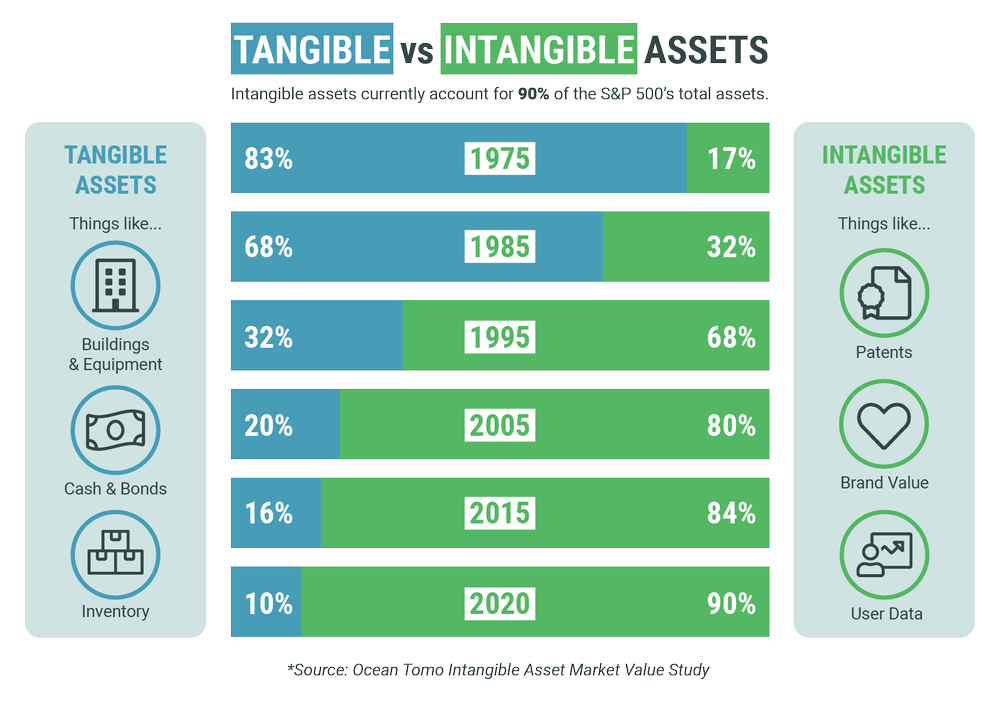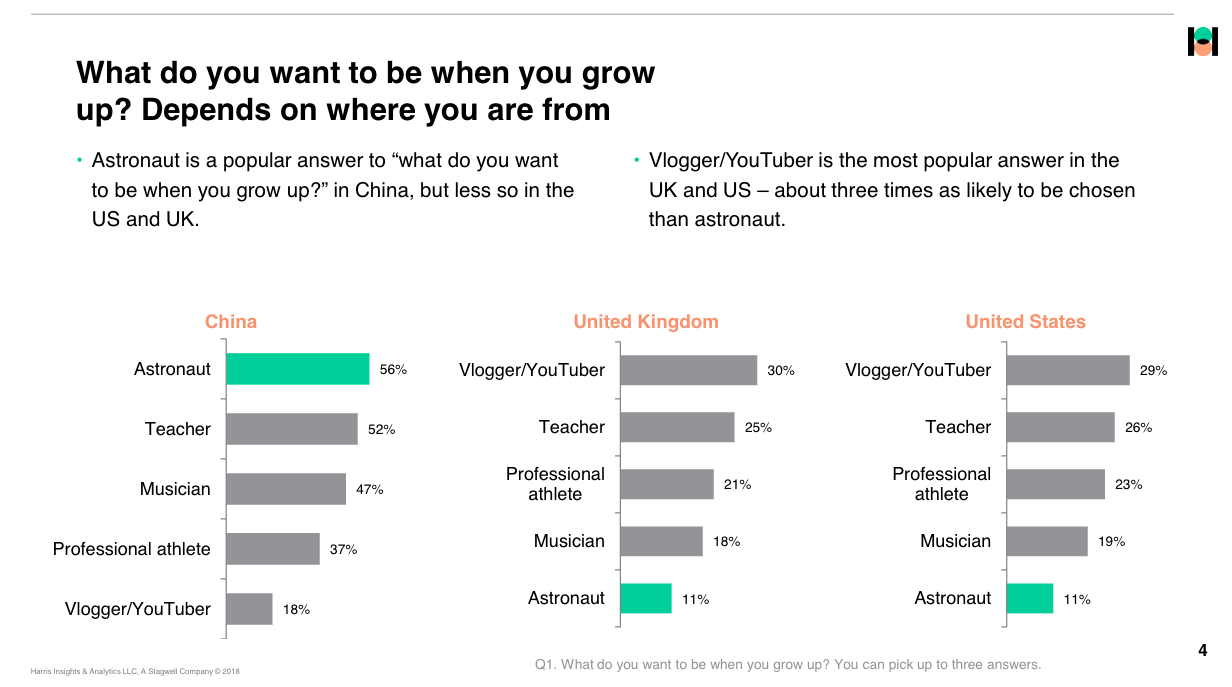Why do we care about trust in the workplace? Trust is a key currency of collaboration and employee engagement. It is the grease that makes the gears turn. When operating in a trusting environment, we feel comfortable sharing and being vulnerable with others and empowered to do our best work. We speak up, take chances, ask questions, and admit mistakes.
Trust serves as the lifeblood of collaboration and teamwork. When fostered appropriately, it paves the way for open dialogue, uninhibited innovation, and a company culture of high team performance and retention.
A team is not a group of people who work together. A team is a group of people who trust each other. – Simon Sinek
I spend most of my days as a founder and CEO working to build trust. Every conversation with employees, customers, investors, and partners is about building trust. In all those conversations, people are asking themselves, “Will this guy deliver on what he says, or is he full of crap?”
From my personal experience, I’ve come to understand that trust is not merely an aspirational goal but the very foundation on which prosperous organizations are built. Every conversation, whether it’s with employees, partners, or investors, becomes a testament to building and sustaining this trust.
KEY TAKEAWAYS
- Trust as Organizational Currency: Trust fuels collaboration and innovation, determining an organization’s momentum.
- Unveiling Transparency’s Depth: Beyond openness, transparency is about vulnerability, authenticity, and facing hard truths.
- Historical Lens on Trust: The emphasis on trust is an evolution shaped by centuries of business dynamics, not just a current trend.
- Emotional Intelligence and Communication: Two cornerstones that, when nurtured, lead to an environment of trust, understanding, and cohesive collaboration.
- Redefining Communication in the Trust Era: It’s about sharing information and ensuring alignment, understanding, and empowerment.

Building Trust In The Workplace: Unpacking Surface vs. Deep-rooted Trust
Of all the ways that I work to build trust during a normal workday, nowhere is the importance of trust more acute than in my experience in business partnerships. Cloverleaf has built a ton of partnerships. We have partnerships with assessment providers (see our full list of behavioral assessments), technology platforms, and coaching and consulting organizations. That is dozens of partnerships with some of the largest companies in the learning and development, coaching, and technology markets.
What is universal about starting and building those partnerships is that it takes a long time to find mutual alignment and earn trust. Often, these partners want to know that we are worth investing their personal time and the time of the people in their organization. Trust is the underlying metric that determines how much of that investment they make, and this only occurs over time.
Initial Impressions and Surface Trust:
At the onset of any professional relationship, we often rely on surface trust. Questions arise like, “Do I believe I know this individual?”, “Do we share common experiences or challenges?” or “Do their objectives align with mine?”. This preliminary layer of trust sets the stage for deeper connections.
Establishing genuine workplace trust demands more than just initial impressions. Collectively, it’s about consistently proving oneself over time, validating the trust others place in us. Trusting work relationships requires making larger trust deposits by consistently delivering on promises and upholding integrity. As the adage goes, “Trust takes years to build and seconds to break.” It’s a precious asset, demanding regular nurturing and commitment.

Free Playbook For Creating An Engaging Employee Experience even During Challenging Times
- What The Future Workplace Looks Like
- How To Activate Emotional Intelligence Within Your Team
- Factors Of Employee Motivation
- Strategies For Employee Engagement
- A Hybrid Work Model For Collaboration, Flexibility, & Fulfillment
- The Power Of Coaching In The Workplace
- How To Reduce The Impact Of Labour Turnover
How To Build Trust In The Workplace
Trust is the backbone of a thriving workplace culture, laying the foundation for collaboration, mutual respect, and employee well-being. Building trusting work relationships often boils down to two key pillars: transparency and effective communication.
The Simple Equation For Building Trust In Your Organization:
Transparency + Effective Communication = Trustworthiness
Transparency: The First Component Of Cultivating Trust
Trust is precious, and regular investments in nurturing it are essential. The cornerstone of such investments is transparency. It serves as the bedrock upon which trust is built, fostering an environment of trust that encourages team members to collaborate without reservations.
The Diverse Forms Of Transparency:
Transparency manifests in various forms. Whether it’s detailing the reasoning behind specific decisions or being candid about one’s aspirations and concerns, transparency ensures mutual understanding.
People are keen, and it’s often obvious when decision-makers attempt to craft messages to present themselves in a certain light or obscure certain details. Team members can read right through this, and nothing will erode employee trust faster.
Without trust, conflict becomes politics, commitment becomes compliance, accountability becomes blame, and results just don’t matter. – Patrick Lencioni
True transparency entails an open, honest reflection on one’s decisions, ensuring collaborators know they’re not just part of a business transaction but a partnership built on trust.
The Rise of Organizational Transparency:
In recent years, transparency has shifted from being a recommended practice to an organizational imperative. The push for pay transparency, driven by glaring discrepancies in remuneration among genders and other underrepresented groups, serves as a prime example.
Lack of workplace transparency can have a negative impact on employee morale, experience, and engagement at work. Moreover, 50% of employees say that a lack of transparency holds their company back. This is why corporate communication functions should strive toward embedding workplace transparency into the corporate culture. – haiilo.com
This drive for transparency has cascaded into other domains, too, including board-level decisions, environmental practices, and supply chain operations. Such transparency trends, driven by legislation and market demands, signal a collective move towards a more transparent work environment.
Leaders across various industries can’t afford to ignore this growing emphasis on transparency. This momentum isn’t just about compliance with laws and professional practices; it reflects a broader societal shift valuing transparency. Leaders need to harness this drive, ensuring transparency becomes an integral part of their team and organizational engagement strategies.
Effective Communication: The Second Component Of Trusting Relationships
Building trust doesn’t stop at transparency. Effective communication is equally crucial, ensuring that transparency is practiced. It can be easy to overlook, but when organizations share information quickly lends to less stress and deeper levels of emotional trust felt among employees.
Bridging the Information Gap: The dangers of keeping teams in the dark:
Silence can sometimes be deafening, especially when critical decisions are at play. Leaders must avoid leaving an information vacuum, as it breeds assumptions and potential mistrust. Regular communication, tailored to your team’s context, can prevent such pitfalls.
Tailored Communication: Delivering the right message to the right audience:
Effective communication isn’t just about frequency but relevance. When significant changes arise, such as personnel adjustments, they must be communicated aptly. Direct, personalized messages for those most affected lay the foundation for trust. As you branch out to a broader audience, refining the message to suit their context is crucial.
Holistic Communication: Presenting complete information and addressing potential questions:
Trust isn’t built on half-truths. Leaders must ensure their communication provides a complete picture, addressing potential questions and concerns. Crafting FAQs, providing context, and explaining the ‘why’ behind decisions can fill any informational gaps, ensuring the team feels valued and informed.
Over-communicating strategy, especially the rationale behind key decisions, builds trust and fosters organizational buy-in, strengthening the bonds of mutual trust.

The Need For Creating A Culture Of Trust Is Nothing New
It’s essential to recognize that trust isn’t a modern-day phenomenon. Its importance in the workplace has roots stretching back over centuries. Understanding how trust has evolved historically, especially concerning transparency and communication, can provide invaluable insights into its ever-growing significance today. Consider how trust in the workplace has transformed and adapted to the changing landscape of business and society.
The Evolution of Transparency and Communication in the Workplace
The Industrial Era (Late 1800s – Early 1900s):
During this period, trust was hierarchical. Managers were expected to lead, and workers were expected to follow. There was little emphasis on transparency, as information was centralized. Communication was top-down, and workers rarely had a say in organizational decisions.
The Post-War Era (1950s – 1960s):
Post World War II, companies started to value teamwork as they grew in size. The hierarchical structure persisted, but there was an increased emphasis on collaboration. However, transparency was still limited to higher echelons of management.
The Technological Revolution (1980s – 1990s):
With the advent of computers and the internet, information became more accessible. This era marked the beginning of a shift towards a more open work environment. Communication tools started to evolve, and employees began to expect more transparency in organizational decision-making.
The Information Age (2000s – 2010s):
The rise of the internet, particularly social media, fundamentally altered the landscape of workplace communication. Employees could now communicate in real time, irrespective of geographical boundaries. The need for transparency grew as information could no longer be contained. Organizations faced scrutiny from both internal and external stakeholders.
The Modern Era (2020s):
In today’s world, transparency and open communication are not just desired but expected. With tools that facilitate instant communication and the rise of remote collaboration, organizations are prioritizing building trust with their employees. They recognize trust as the bedrock of collaboration, innovation, and organizational effectiveness.
The emphasis on psychological safety, a term popularized by teams at Google after their research during Project Aristotle, further emphasizes the need for trust. Employees today not only want to know organizational decisions but also want to have a voice in them. They seek authentic leaders who communicate transparently and foster an environment of mutual trust.
7 Ways To Practice Transparency & Communication To Create High Levels Of Trust
As organizations grow, the challenges of maintaining trust and cohesion across diverse teams intensify. Below are seven actionable strategies for supporting transparency and communication that leaders can use to ensure high levels of trust regardless of the organization’s size.

1. Regular Updates and Check-Ins:
In sprawling organizations, information can easily get siloed. By instituting regular communication channels, leaders ensure that every corner of the organization receives consistent and clear updates. This aligns teams and fosters a sense of unity and purpose.
2. Explain Decision-Making Processes:
Sharing the rationale behind significant decisions demystifies leadership actions, fosters understanding, and reduces the scope for rumors or misinformation.
3. Authentic Goal Sharing:
Clear communication about the organization’s direction ensures that all units, departments, or teams align their objectives harmoniously. It’s about sharing the goals, vision, and mission, creating a cohesive organization with clear expectations.
4. Address Discrepancies:
Discrepancies in large organizations can become systemic if not addressed. By regularly auditing and transparently addressing discrepancies, leaders ensure fairness and cultivate a culture of accountability and integrity.
5. Utilize Technology:
Leveraging platforms can streamline communication and project tracking across vast, dispersed teams. It ensures everyone, regardless of their position, has access to real-time, consistent information, enhancing transparency and efficiency.
6. Value Feedback:
Despite size and complexity, it is imperative to foster an environment where employees at all levels feel their voices can be heard by leadership. Feedback can bridge the gap between the C-suite leaders and team members.
7. Learning and Development:
Investing in training and development emphasizes a commitment to growth and transparency. In large entities, where the ripple effect of a lack of trust is significant. Organizations that proactively support improving employee experience by implementing trust-building tools can positively influence the entire organizational culture.
Cloverleaf’s Role in Fostering Trusting Workplace Relationships
At its core, Cloverleaf is designed to help teams quickly build trust. When team members understand each other and recognize their strengths, they can more easily work together.
By supporting self-awareness, you can reduce people-related issues. Trust is not abstract; it is a tangible feeling that teams can strengthen every day. When individuals can clearly see and know one another’s behaviors, communication styles, and strengths, it decreases the pull toward micromanaging and frustration among teammates.
Every team has a star player who exhibits enthusiasm and vision beyond their current role. A clear indication of this is when a direct report, during a 1-1 call, eagerly declares their intention: “They would like to be a manager!” This ambition is commendable but also prompts an essential question: Are they ready for the challenge?
Such aspirations reflect personal ambition and mirror the shifting expectations in modern workspaces. With platforms like LinkedIn showcasing management training success stories, there’s no shortage of inspiration. However, understanding and evaluating managerial readiness is critical. How can you determine if you or someone on your team is cut out for a management role? How does an organization measure this readiness, and what does it encompass?
Key Takeaways
The Multifaceted Nature of Managerial Readiness: Managerial readiness isn’t one-size-fits-all. Depending on the sector and organizational goals, defining what constitutes readiness requires understanding both technical expertise and leadership acumen.
- Leadership Beyond Expertise: Being an expert in a particular domain doesn’t guarantee effective management. True leadership blends strategic foresight with interpersonal prowess, ensuring managers can inspire, guide, and set a vision.
- Recognizing Potential Leaders: Identifying the next generation of managers is an art refined through observation and engagement—attributes such as active listening, emotional regulation, and a team-oriented approach signal managerial promise.
- Cultivating Leadership from Within: Proactive nurturing of budding leaders through feedback, mentoring, and development opportunities ensures a robust future for the organization. Tailoring developmental programs and providing the necessary tools and resources are pivotal.
- Investment in People Equals Organizational Resilience: In a rapidly changing landscape, an organization’s success hinges on its dedication to cultivating and championing its people’s growth and potential.

What is management readiness?
The Multifaceted Nature of Leadership
Managerial readiness is not a monolithic concept—it varies based on the sector, organizational goals, and even the cultural context. For instance, what constitutes a successful manager in the field of manufacturing could be poles apart from what’s needed in marketing. At its core, the idea of managerial readiness revolves around an organization’s priorities and purpose.
Technical Know-How vs. Leadership Acumen
A prevalent misconception many companies fall victim to is the idea that subject matter expertise or technical knowledge is the sole criterion for a management position. While this know-how is undeniably valuable, it doesn’t inherently prepare one for a leadership role.
The truth is that being highly knowledgeable about a specific area is a strong asset, but it isn’t the sole indicator of effective managers. The management landscape is laden with experts who falter when placed in a leadership role. The essence of leadership goes beyond expertise; it’s about being able to inspire, guide, and set a vision for a team. Thus, managers must be LEADERS, combining their technical know-how and leadership skills. It’s about gauging leadership acumen—understanding that a manager’s responsibility is multi-dimensional, blending strategic foresight and interpersonal prowess.
Crafting A Blueprint of an Ideal Leader
To properly define managerial readiness in your organization, it’s crucial to invest time and effort in sketching out a profile of the ideal leadership figure for the job description. This profile serves as a benchmark for aspiring leaders and will aid in shaping organizational culture. To help you start, consider the following aspects to help you define what is essential to your team.
7 Key Considerations in Crafting Your Leadership Profile
- Organizational Values: What ethos should leaders embody? How should they reflect and champion the organization’s values?
- Interpersonal Dynamics: Leadership isn’t just about strategy; it’s about people. What interpersonal skills are paramount for success?
- Guidance and Mentorship: Leaders shape their teams. How will they enhance both individual and collective performance?
- Technical and Business Acumen: What degree of business or technical understanding is required for different levels of leadership?
- Navigating Change: Leaders need adept change management and problem-solving skills to lead through change and uncertainty. What resources are available to support them?
- Communication Skills: Beyond just conveying information, how should leaders foster a work environment of open dialogue and cross-functional collaboration?
- Values Integration: A leader’s approach should align with the organization’s values. Whether it’s being approachable or offering timely feedback, how can these values be translated into daily actions?
Defining managerial readiness isn’t just about setting specific benchmarks or criteria. It’s about understanding the multifaceted nature of leadership and ensuring that the individuals being considered for managerial roles embody the technical expertise and leadership capabilities uniquely required in their specific domain. Each organization must critically examine what leadership means to them, what values and behaviors they cherish, and how they foresee leaders propelling the organization forward.
As we’ve outlined, managerial readiness goes beyond technical know-how and deepens into leadership acumen, interpersonal skills, organizational values, and adaptability to change. However, once this foundation is established, the next step is to recognize these attributes in potential leaders.
Up Next: Recognizing the traits of future managers and understanding the subtle yet impactful signs that someone is ready to lead.
Help Your Leaders Move From A Boss to Coach!
Inside you'll learn:
- Strategies for developing essential leadership skills within your managers
- Best practices for communicating and coaching your team
- Insight for navigating conflict and change
- Practical ideas for enhancing teamwork and motivating team members


Recognizing Management Readiness
Lena, a seasoned manager at a fast-growing tech firm, often found herself silently observing the dynamics among her team. As a seasoned leader, she knew recognizing potential managers was an art honed through years of experience. As she settled into her chair for her regular one-on-one sessions with her team members, she couldn’t help but reflect on the subtle signs of leadership that had caught her attention.
She remembered Jacob, always the team player. He was the first to step in whenever the team was up against a tight deadline, offering assistance even if it meant going beyond his job description. His dedication was not just about completing tasks but genuinely ensuring the team’s success.
Then there was Sara, who had recently admitted to a mistake she made on a project. Her accountability stood out. Instead of deflecting the responsibility, she owned up to it, ensuring lessons were learned and similar errors were avoided in the future.
During team meetings, Lena noticed how Michael always listened intently, absorbing what others were saying without bringing the spotlight back to himself. Such active listening was a rare trait and spoke volumes about his potential as a manager.
Amidst the hustle and bustle of corporate life, it was Maria who set an example for work-life balance. She ensured her well-being was in check, understanding the significance of setting healthy boundaries. Her balanced approach was a testament to how she’d be able to lead without burning out, ensuring the well-being of those she leads.
Lena also recalled a recent presentation by Emma. The way she communicated complex ideas with such clarity and effectiveness left an impression on everyone in the room. Her peers respected her for her technical expertise and ability to connect effectively.
And when tensions ran high in the team, Raj showcased impeccable emotional intelligence. He’d ensure the atmosphere remained calm, diffusing potential conflicts and ensuring everyone was heard.
These observations led Lena to incorporate specific questions during her one-on-ones, subtly inquiring about their aspirations and sharing her comments about their leadership potential. She believed in nurturing leadership from within and took it upon herself to guide those budding leaders, even if they didn’t yet recognize their potential.
It’s in these everyday moments, through observation and active engagement, that leaders like Lena identify new managers. By paying attention to the nuances of team dynamics, they cultivate the next generation of leadership, ensuring a robust and visionary future for their organization.
7 Signs Someone Is Ready To Become A Manager
While expressing intent is a clear indicator of managerial aspiration, there are more subtle signs that individuals often exhibit, revealing their potential. Here are some signs that hint at a person’s readiness to step into a managerial role:- Team player with a servant-minded approach. Proactively stepping up, especially during critical moments, showcases their dedication and willingness to go the extra mile.
- Willingness to take accountability for their actions. A budding leader isn’t the type to deflect responsibility or pass the buck. High-potential employees own their actions, develop new skills, and are able to admit mistakes.
- Skillful in active listening. Great listening skills are essential to leading others. People interested in just speaking and directing can find themselves disconnected from their teams. People who actively listen and don’t constantly bring the subject back to themselves may be great candidates for manager roles.
- Prioritize their own well-being and understand healthy boundaries around work. Healthy managers lead to healthy teams. Work is only part of life; it is not responsible for providing for all of our social and emotional needs. Someone who is constantly burning out or overly relying on the organization will have unrealistic expectations of the organization and of others.
- Able to effectively speak and communicate clearly. Great leaders communicate succinctly, clearly, to and with the right people and in a timely fashion.
- Well-respected by other team members. Earning respect from their team signifies an individual’s ability to create a comfortable and trusting environment. This trait is indicative of someone adept at forging strong and effective connections with others.
- Takes time to regulate their emotions. Effective leaders balance vulnerability with diplomacy, especially during challenging communications. They maintain composure and adeptly navigate tense situations to find resolutions.
Cultivating Leadership Potential
A leader can recognize an individual contributor with leadership promise by actively observing these attributes. Regular one-on-one meetings offer a platform to integrate development into everyday work conversations. It’s essential to share feedback about where you notice their leadership potential. Inquire about their vision for the future – do they see themselves leading? Even if they don’t have an immediate vision of stepping into management, continuous encouragement, validation, and guidance can help nurture their latent potential. The key is to stay persistent and committed to cultivating leadership abilities throughout the organization.How Can You Support Someone Who Is Ready to Lead Or Manage?
When supporting those who are preparing to lead or manage, it’s important to articulate strengths and opportunities for growth. Whether a specific position is available, developing these individuals through stretch assignments, coaching, and project management opportunities is still important.
Guided conversations are a cornerstone of leadership development. Whether they’re part of a formal evaluation or casual check-ins, these dialogues can offer invaluable insights into an individual’s leadership trajectory. When engaging in such conversations with potential leaders, delve into these crucial areas:

6 Supportive Ways To Develop New Managers
- Understanding Leadership Styles: Ask them to articulate their vision of leadership. Do they see themselves as more directive or leaning towards a supportive role? How familiar are they with a coaching style of leadership? Our Boss to Coach Playbook can offer more insights into this perspective.
- Harnessing Leadership Strengths: Encourage them to introspect and share their perceived leadership strengths. Discussing how they can further amplify these strengths in their current roles can yield actionable strategies.
- Addressing Leadership Challenges: Just as it’s essential to identify and build upon strengths, recognizing challenges or areas where they can grow is equally crucial. Setting concrete objectives to bridge these gaps can be a proactive step toward leadership readiness.
- Aligning with Organizational Leadership: Gauge their perception of an ideal leader within the organization’s context. Comparing this with the organization’s defined leadership profile can help align their aspirations and the organization’s expectations.
- Seeking Managerial Support: It is vital to understand the specific types of support they expect from their immediate supervisors. This can streamline their journey, ensuring they have the necessary resources and mentorship.
- Resource and Development Needs: Lastly, discuss the tools, resources, or training they feel would best assist them in their aspirations. This feedback can guide the organization in tailoring its developmental programs for maximum impact.
A Roadmap for Success
Once you’ve identified the traits and requirements, it’s time to lay down a roadmap for their journey to leadership.
- Management Training: Consider introducing comprehensive management training programs. This will give them the necessary tools and knowledge to tackle new challenges.
- Readiness Assessment Templates: Providing templates or frameworks for self-assessment can empower these potential leaders to regularly evaluate their progress and readiness.
- Networking Opportunities: Encourage them to tap into the power of social media. Platforms like LinkedIn can be instrumental for young managers to connect, learn, and share insights with a global community of leaders.
- Regular Feedback: Continuous, specific, and timely feedback can fast-track their development. This feedback loop ensures they’re always aligned with the organization’s goals and personal development trajectory.
By investing in their growth and providing a structured path, you’re not just preparing an individual for a managerial role but strengthening the entire organization’s leadership foundation.
Final Thoughts
Managerial readiness is a gradual transformation, a process nurtured over time by exceptional leadership. When stalwarts guide the leaders of tomorrow, the outcome is twofold: organizations not only retain their top talent but also harness their immeasurable potential.
In an era marked by constant flux, where challenges are ever-evolving and new opportunities emerge at every turn, it becomes increasingly evident that the true mark of an organization’s resilience and success is its investment in its people. Those who prioritize and champion this endeavor are the ones poised to navigate the future with confidence and vision.
Leading people is no small feat, especially when you’re at the helm of a vast organization. As someone responsible for steering People Strategy in big enterprises, you’ve undoubtedly felt the weight of ensuring that every team member, from the fresher to the veteran, feels seen and heard. It’s not just about empathy; it’s about business. Research consistently shows that companies that actively foster a sense of belonging and inclusivity tend to outperform their competitors.
What happens when employees are heard and cared for in ways that are meaningful to them?
The best companies experience half the turnover as their peers and have employees who are six times more likely to help recruit talent. Eighty percent of employees on the best companies list look forward to coming to work and feel psychologically and emotionally healthy. Ninety percent say their company is a great place to work, and they feel cared for. At average workplaces, 52% of employees feel management sincerely cares about them as a person, and 57% say their workplace is great. – Michael C. Bush
But how do we translate this knowledge into actionable insights and strategies? Drawing from real-life stories and grounded in expertise, this piece is tailored to help people leaders like you navigate these waters with confidence.
Key Takeaways
- The Business Case for Belonging: Companies prioritizing belonging consistently outperform rivals with lower turnover and greater productivity, potentially saving millions annually.
- Employee Well-being: A culture of psychological safety boosts innovation, reduces stress, and improves job satisfaction and health.
- Retaining Leads To Loyalty: A strong sense of belonging is pivotal in reducing turnover and retaining invaluable expertise in the organization.
- Inclusivity Beyond Team Cohesion: It’s essential to value every employee’s uniqueness, ensuring all feel seen and valued regardless of demographics.
- Intentional Actions to Create Belonging: Strategic efforts, like appreciating individual contributions and empowering decision-making, create an environment where everyone thrives.

Why is Belonging So Important in the Workplace?
1. Enhancing Psychological Safety Fosters Better Employee Well-being
A culture that promotes psychological safety is at the heart of every thriving organization. This term, popularized by organizational behavioral scientist Amy Edmondson, underscores the value of an environment where individuals feel comfortable taking interpersonal risks. But what does this have to do with belonging?
Belonging is more than just fitting in; it’s about feeling safe to be one’s authentic self without the fear of retribution or ostracization. When employees genuinely feel they belong, they are more likely to voice their opinions, express concerns, and share innovative ideas. This is deeply intertwined with their mental health and overall fulfillment.
An environment lacking in belonging can lead to feelings of isolation, stress, and burnout, ultimately hampering the mental wellness of the workforce. Recent studies suggest that employees in psychologically safe environments, characterized by mutual respect and trust, exhibit better health, lower stress levels, and higher job satisfaction.
2. Elevate Employee Engagement and Increase Job Satisfaction
A deep sense of belonging doesn’t just enhance mental well-being—it also supercharges employee engagement and satisfaction. Think about it: When you feel valued, heard, and genuinely part of a team, aren’t you more motivated to give your best?
Employees who believe they belong are more likely to go the extra mile, display loyalty to their organizations, and commit to their roles. Their satisfaction is tied to their paycheck and the deeper, intrinsic reward of being part of something bigger. A survey from 2021 indicated that employees who felt a strong sense of belonging were twice as likely to be highly engaged in their roles compared to those who did not.
3. Improve Retention Rates and Reduce Turnover
Retention is a pain point for many large organizations. Hiring high-potential employees is one thing, but retaining them? That’s a different ball game. Here’s where the magic of belonging plays a crucial role.
Employees who don’t feel they belong or are not valued are more likely to seek opportunities elsewhere. Most of the time, it’s not always about better compensation or a fancier job title. More often than not, the underlying reason is the lack of connection, recognition, or a sense of purpose in their current roles. Businesses that prioritize belonging can experience a significant drop in turnover rates, saving them not only monetary costs but also the invaluable experience and knowledge that employees carry with them.
4. Significant Surge in Overall Productivity
Lastly, let’s talk numbers. While belonging might seem like an abstract concept, its impact on productivity is tangible. Employees who feel they belong are not just happier; they’re more productive. They collaborate better with their peers, show increased creativity, and tackle challenges with greater resilience.
When employees genuinely experience belonging, the positive impact on an organization’s financial health is profound. A strong sense of belonging has been associated with a remarkable 56% boost in job performance, a notable 50% decrease in the likelihood of turnover, and an impressive 75% fewer sick days taken. To put this into perspective, for an organization with 10,000 staff members, these benefits translate to an annual financial saving exceeding $52M. – Harvard Business Review
The correlation is evident: when individuals feel valued and know their contributions matter, they bring their A-game to the table.

Free Playbook For Creating An Engaging Employee Experience even During Challenging Times
- What The Future Workplace Looks Like
- How To Activate Emotional Intelligence Within Your Team
- Factors Of Employee Motivation
- Strategies For Employee Engagement
- A Hybrid Work Model For Collaboration, Flexibility, & Fulfillment
- The Power Of Coaching In The Workplace
- How To Reduce The Impact Of Labour Turnover

Understanding the Current State of Your Company Culture
Understanding Workplace Belonging:
Fostering a sense of belonging in the workplace might sometimes come across as intangible or trivial. Perhaps you’ve questioned its significance, wondering, “Is it genuinely essential? How do I cultivate it, and how can its impact be measured?” The answer lies in our innate human desire: our yearning to connect, to be recognized, and to form bonds and attachments. This longing for belonging is a profound and primal motivator.
A Personal Reflection on Belonging:
Reflecting on my journey, working at Cloverleaf has been incredibly fulfilling. My immense pride in being associated with the organization stems from our achievements and the deep belonging I feel here. My teammates appreciate me for who I am, celebrating my unique attributes that, in different contexts, might have been perceived as “too much.” My enthusiasm, ambition, and compassion are accepted, celebrated, and harnessed here.
Still Not Convinced About The Importance Of Belonging? Consider This…
To understand the gravity of belonging, think back to your early years, perhaps junior high. For many, it was a time characterized by the intense desire to fit in and the crushing weight of exclusion when one didn’t.
Remember that feeling? The stark difference between the warmth of inclusion and the cold sting of isolation? That’s the magnitude of belonging we’re discussing here.
Belonging isn’t just about avoiding exclusion. It’s about the positive affirmations we receive when someone appreciates our quirks, laughs at our jokes, or supports our endeavors. It’s about feeling valued, cherished, and seen. In the workplace, it’s about recognizing every individual piece and understanding how indispensable it is to the bigger picture. That’s the essence and impact of belonging we aim to cultivate in our professional environments.
3 Areas Of Focus For Creating Belonging In The Workplace
1. Assess Your Employee Experience
Belonging isn’t just a term; it’s a heartfelt sentiment. It encapsulates the emotions of being seen, valued, and supported. Our day-to-day interactions play a crucial role in fostering this sentiment. It’s interwoven in the way people communicate, share ideas, and engage with one another during team meetings and even informal check-ins.
An effective way to understand this more deeply is by diving into the employee experience. You don’t need an elaborate survey or a webinar to start. Instead, initiate an open conversation with a teammate. Encourage them to share their experiences, perhaps shedding light on instances where they might’ve felt isolated or excluded. Discover their perspectives on these feelings and understand their methods of enduring such challenges. Such feedback is vital for our decision-making process to foster belonging.
Should you uncover instances of exclusion or isolation, it’s essential to correct this trajectory. By engaging in open communication, you can delve into the nuances of their experience. Ask them how they felt during these moments, how they managed, and what changes might enhance their well-being.
2. Appreciate The Uniqueness Of Each Individual On Your Team:
Remember, fostering a feeling of belonging is not just about team cohesion but also acknowledging and celebrating individuality. This act of recognizing each employee’s uniqueness—regardless of their demographics—is a testament to inclusive leadership and workplace culture.
Every individual wants their unique contributions to be seen and valued. By understanding and appreciating each teammate’s varied strengths, backgrounds, and personalities, we set a robust foundation for true inclusivity. Thus, belonging becomes about feeling seen, valued, and supported at every level.
3. Value Work-Life Balance
The surge in remote work has opened up new challenges and opportunities in fostering belonging. Physical distance might lead to feelings of disconnect, but ensuring that the culture of belonging permeates even virtual spaces is essential. Regular one-on-one’s, team-building activities, and open channels for team members to experience remote collaboration can bridge this gap.
When an employee says, “My uniqueness was seen, and my team valued it,” it’s a testament to the effectiveness of your initiatives, whether in a traditional office or a remote setting.
Moreover, maintaining a work-life balance directly impacts an employee’s overall sense of fulfillment and peace of mind. By recognizing the importance of this balance, especially in a hybrid work model, leaders can reinforce the values of support and understanding, essential components for fostering high belonging.
10 Ways for Leaders To Foster Belonging and Inclusivity in the Workplace
A sense of belonging doesn’t just emerge; it’s cultivated through intentional actions and strategies. This section delves into practical tips that leaders can integrate into their management repertoire, ensuring that each member feels anchored, valued, and an integral part of the collective team journey.

Foster Belonging through Team Building:
1.See, Acknowledge, and Value Uniqueness:
- Use resources like Cloverleaf to identify and acknowledge your team’s unique traits.
- Go beyond recognizing to actively appreciate their contributions. This might include public affirmations like a shout-out in a Slack channel.
- Instill a coaching approach to further draw out their best selves.
2. Support Growth and Provide Opportunities Aligned with Strengths:
- Use tools like CliftonStrengths to understand strengths and leverage them.
- Allow projects that ignite passion, tapping into individuals’ key strengths.
3. Engage in Authentic Conversations and Foster Genuine Presence:
- Encourage open dialogues about feelings, values, and authenticity.
- Prioritize genuine interaction, being fully present, and valuing the individual over the task.
4. Educate on the Value of Belonging and Balance with Productivity:
- Emphasize how feelings can drive change and enhance productivity.
- Recognize the balance needed between accomplishing tasks and valuing individuals.
5. Empower Employees to Shape Solutions:
- Engage in collaborative strategy-building for fostering belonging.
- Take feedback seriously, merging personal development opportunities with business needs.
6. Engage in Regular One-On-Ones:
- Facilitate both peer and manager-employee interactions to strengthen team bonds.
- Use themes or topics to guide deeper, more meaningful conversations.
7. Initiate Team-building Activities:
- Encourage cross-functional brainstorming.
- Host collective learning sessions like webinars for a shared experience.
8. Support Remote Collaboration and Engagement:
- Create space for informal chats on platforms like Zoom or Slack.
- Ensure proficiency with collaboration tools, offering regular training sessions.
9. Promote and Support Employee Resource Groups (ERGs):
- Highlight different ERGs monthly, sharing their achievements and goals.
- Encourage projects that align with both ERG goals and company culture.
10. Highlight Success Stories and Achievements:
- Share stories that emphasize the organization’s values in action.
- Provide platforms where team members can showcase moments of pride and support.
The steps outlined here serve as more than just directives; they’re a commitment to recognizing the multifaceted tapestry of individuals that make up a team. Leaders enhance productivity by valuing uniqueness, championing growth, creating spaces for authentic conversations, and crafting a nurturing environment where everyone thrives.
Final Thoughts
The heart of an organization lies not just in its operational excellence but in its culture. A culture of belonging is not merely a perk or a box to check off; it’s the lifeblood that fuels every contributor’s passion, commitment, and innovation. This sense of belonging, of feeling seen, valued, and supported, shapes not only individual fulfillment at work but the overall trajectory of a company.
To the leaders reading this: Your role transcends traditional HR tasks. You are the torchbearers of your organization’s culture. With the ever-evolving dynamics of the workplace, are we valuing the person for their work and as someone with intrinsic worth?
In the intricacies of your organization, every individual is a unique and essential piece. Your organization can truly realize its full potential when each person feels acknowledged, cherished, and valuable.

In an ever-evolving workplace, understanding the true essence of a good leader is more critical than ever. I recently had the privilege to immerse myself in the world of the Air Force – a place where the distinction between good leadership and poor leadership isn’t just about performance metrics; it’s a matter of life and death.
At first glance, leadership skills in such a command and control environment might seem evident through its overt symbols:
- Badges – that denote rank and responsibilities clearly demarcate who leads and the sphere of their leadership.
- The presence of support staff – proportional to rank ensures that those at the top are efficiently organized and achieve their utmost potential.
- Inevitably packed schedules – because if you’re in a position of authority and responsible for budgets, there’s a queue of stakeholders and team members eager to meet with you.
Yet, upon deeper reflection, it becomes apparent that these are merely the superficial trappings of leadership. Such symbols can be deceptive. Titles, packed agendas, or badges don’t inherently qualify one as an effective leader. True leadership transcends these symbols and digs deeper into intrinsic qualities to build trust, a topic we delved into in a previous blog post discussing the nuanced difference between leadership and management.
Key Takeaways
- Titles Aren’t Indicators of Leadership: Leadership often looks different than societal hierarchies suggest and transcends mere designations or ranks.
- Leadership Is An All-Encompassing Endeavor: A genuine leader is someone who avoids biases, develops new skills, leads with empathy, and views failures as stepping stones.
- Leadership Resonates in Quiet Moments: While attributes like courage and bravery are often celebrated, true leadership often shines in the subtleties and the consistent actions taken outside the spotlight.
- Leadership Is A Matter Of Character: Leadership is about understanding and prioritizing others.
In this piece, we’ll go beyond the surface, exploring what truly constitutes effective leadership, spotlighting the qualities of a good leader, and offering insights on how to nurture vital attributes like emotional intelligence, active listening, collaboration, and a positive attitude in the dynamic realm of modern workplaces.

What is Leadership? Dispelling Common Misconceptions
Defining Leadership in a Digital Age
Leadership, a term ubiquitously searched online, often returns results flooded with idealistic portrayals and lofty quotes. But the heart of strong leadership is more nuanced than most quick-tip articles suggest.
Recently, my travels led me to an enlightening read, a magazine named Real Leaders, dedicated to the essence of ethical leadership and its significant impact in the B Corps. The pages weren’t filled with just theoretical knowledge but provided real-world insights from its readership, diving deep into the true essence of leadership. Here are a few excerpts that profoundly captured the essence:
It’s a state of being of a person from a holistic approach. Leadership isn’t compartmentalized; it’s seamless, spanning across communities, personal spheres, and workplaces.
A quintessential leader is not just one who sits on an echelon of authority but is someone unfazed by disruptions. They challenge the norms, ask the questions others dread, learn from their missteps, are quick to forgive, lead with empathy, and create an environment where failures, big or small, are seen as stepping stones and not stumbling blocks
At its core, leadership is about impact. It’s about making a difference in business metrics, lives, and the broader world.
Leadership in Popular Culture vs. Reality
While these encapsulations set a high leadership benchmark, they reflect the profundity and gravitas of the role. Pop culture often glamorizes leadership with poster-worthy qualities like integrity, courage, and bravery. And yes, these attributes are commendable and pivotal. However, in the life of a leader, there aren’t always grand stages to exhibit these. True leadership often resonates in the quieter moments, unsaid gestures, and consistent actions taken in the shadows of spotlighted events.
The Hollywood Image vs. Real Leadership Qualities
Qualities like courage and bravery are often associated with the Hollywood version of leaders. However, it’s essential to shine a light on some frequently overlooked essential leadership qualities that define a great workplace leader.

Free Playbook For Creating An Engaging Employee Experience even During Challenging Times
- What The Future Workplace Looks Like
- How To Activate Emotional Intelligence Within Your Team
- Factors Of Employee Motivation
- Strategies For Employee Engagement
- A Hybrid Work Model For Collaboration, Flexibility, & Fulfillment
- The Power Of Coaching In The Workplace
- How To Reduce The Impact Of Labour Turnover

5 Essential Characteristics Of A Good Leader
Leadership is not about titles or corner offices but the innate qualities that distinguish impactful leaders from the rest. In today’s world, where everyone claims to have a unique leadership mantra, these time-tested characteristics truly matter. I’ve been fortunate to witness firsthand leaders who embody these traits, and the difference they make is palpable.
Before we delve deeper into each trait, let’s set the stage with a perspective I’ve come to appreciate over the years: Great leadership is as much about understanding others as it is about understanding oneself.
1. ‘Others over Self’ Focus
A mark of exceptional leadership is an unwavering dedication to those they guide. Great leaders demonstrate a deep, genuine interest in the lives of their team members. It’s not merely about recalling a spouse’s name or remembering the age of a teammate’s child. Effective leaders delve deeper into discerning their team member’s motivations, passions, and strengths. Strategic leaders can channel these insights for the benefit of the individual and the collective team.
It’s in the nuanced details where true leadership shines. For instance, sensing mounting anxiety during a meeting and subsequently taking the initiative to address it privately shows an innate sensitivity and responsiveness. This proactive approach, often seeking to understand and aid, is what people genuinely appreciate and desire in their leaders.
Embracing an ‘other-first’ perspective is inherently tied to humility. This leadership style propels strong leaders to value and prioritize others’ well-being over their own interests or accolades.
2. Curious but Decisive
Effective problem-solving is a multifaceted skill. Foremost, it demands a profound curiosity that goes beyond surface-level understanding. Great leaders possess an innate drive to delve deeper, questioning the whys and hows rather than merely accepting things at face value. Gathering relevant data, seeking diverse insights, and then wielding that knowledge with a decisive hand is what differentiates good leaders from the rest.
A recent MIT study sheds light on the intricacies of leadership and character. According to the study, judgment stands out as a pivotal element in shaping one’s character and subsequent decisions.
The authors articulate, As we unpack what character is and how it operates, the critical underpinning is its impact on judgment and the choices we make minute by minute, day in and day out — what we call the micro-moments between stimulus and response. This character-based judgment supports superior performance, and its lack explains both misconduct and poor decision-making.
It’s crucial to understand that while judgment is fundamental to ethical and effective decisions, the pace and efficiency of these decisions are equally vital. Successful leaders ensure that decisions are timely and, if necessary, delegated aptly to prevent any stalling or hindrance to the team’s momentum.
In essence, leadership in the workplace is defined by a combination of insightful decision-making and the adaptability to execute them promptly.
3. Forward-Thinking Vision
The best leaders clearly understand the direction they and their team need to head in. They don’t simply wander aimlessly; they have a sense of purpose, steering their team with effective communication and intentionality. A vision-oriented leader is often future-forward, with a common goal guiding their decisions and actions toward the big picture.
Platforms like Cloverleaf offer invaluable tools for leaders, bolstering their capability to navigate with precision in difficult situations. Specifically, Gallup®’s CliftonStrengths®, supported by Cloverleaf, is instrumental in pinpointing strengths like ‘futuristic’ and ‘strategic’. These are the cornerstones that can be harnessed in setting a coherent and compelling vision for a team or organization.

Cloverleaf: Increase Your Team's Strength Awareness
Engaging with our Team Dashboard leads to a significant uptick in understanding individual strengths. Cloverleaf equips leaders and team members to spotlight and harness these strengths, adapt seamlessly to shifting circumstances, and enhance their teamwork dynamics.
4. Inspirational Amidst Challenges
Integral to leadership is the capacity to inspire others, especially when faced with challenging tasks. No one needs leadership for the easy tasks; it’s during the arduous, uphill battles that true leadership shines. As teams navigate new challenges, there will be moments of doubt and discouragement. True leaders use setbacks as professional development opportunities while fostering a positive work environment.
Inspiring teamwork isn’t about blind positivity but rather genuine encouragement. Great leaders are seasoned coaches spurring their team on, aware of the realities yet instilling hope. This intricate balance ensures that the team members experience empowerment and motivation despite challenges, thanks to a leader who knows how to lift their spirits.
5. Genuine Humility
True humility in leadership is not about downplaying one’s contributions with a dismissive “Oh shucks, it wasn’t me; it was the team.” Rather, it’s rooted in a profound self-awareness that acknowledges limitations. This is the kind of humility that says, “I don’t have all the answers.”
It’s tightly intertwined with the trait of curiosity, as mentioned in the “Curious but Decisive” section. This form of humility actively pursues better solutions, recognizing that they might not always come from the top.
Humble leaders understand, “I don’t always know best,” and therefore seek wisdom and insights from those more knowledgeable. More than just a passive trait, it’s a proactive stance, prompting leaders to demand accountability from their teams and themselves. In essence, genuine humility is about placing the collective good above individual pride, ensuring that decisions benefit all and not just the satisfaction of one.
Final Thoughts
It’s imperative to remember that titles and accolades fade, but the impact of genuine leadership endures. I’ve had the privilege of working with and observing leaders who exemplified these five leadership traits, and their influence has been nothing short of transformative.
The journey of leadership isn’t about reaching a destination; it’s about continuous growth, understanding, and reflection. Aspiring leaders can ponder these characteristics and strive to embody them as role models for their team. Because, in the end, the mark of a great leader isn’t just about leading; it’s about leaving a legacy of positive change.

In the fast-paced, ever-adapting landscape of modern work environments, one word holds the power to transform organizational dynamics: collaboration. Collaboration is more than just working side-by-side—it’s the synergistic force driving innovation, bridging generational gaps, and turning individual efforts into collective triumphs.
As remote collaboration becomes the norm and knowledge surpasses hard assets in value, understanding the true essence of collaboration and its pivotal role in the modern workplace isn’t just beneficial—it’s essential.
This workplace shift demands adaptive leadership capable of fostering an environment where collaboration isn’t just encouraged—it thrives. Keep reading as we share the transformative power of effective collaboration to bridge generational divides, fuel innovation, and elevate individual contributions into collective victories.
Key Takeaways
Diversity, openness, and respect are the foundations of collaboration.
Transparency will catalyze trust to create open communication.
Developing understanding and emotional intelligence can pave the way for harmonious teamwork.
Leaders must model and explain why collaboration is beneficial to address resistance and eliminate silos.
Adaptive leaders enable collaboration by remaining flexible, responsive, and committed to learning.

What Is Collaboration In The Workplace?
Collaboration in the workplace is about individuals joining forces to accomplish a shared goal; it’s an effort and a mindset that transcends the boundaries of simply working together. It is an effort to prioritize the group over individual achievements.
Embracing ‘Juntos’: The Heart of True Collaboration
When we talk about collaboration in the workplace, we’re delving into a concept much richer than just working alongside one another. The Spanish term “juntos” captures this essence beautifully. While its literal translation is “together”, it conveys a deeper sense of unity, a coming together of individuals for a common cause. It paints a picture of individuals united, not just by a task but also by a shared purpose and vision.
Imagine a group of musicians: individually, they might be skilled with their instruments, but when they play “juntos,” they create a symphony. That’s the depth of collaboration we’re aiming for in our workplaces.
A truly collaborative workplace aims for superior collective outcomes that would be unattainable in isolation.
The Pillars of True Collaboration: Humility, Curiosity, and Mutual Respect
At the core of a collaboration strategy lie three crucial attributes: humility, curiosity, and mutual respect.
1. Humility allows us to acknowledge and appreciate the unique skills and different perspectives others bring. It’s the understanding that we don’t have all the answers and that a group’s ability to share ideas surpasses that of an individual.
2. Curiosity drives us to ask questions, seek understanding, and explore new ways of problem-solving. It encourages continuous learning and makes the collaborative process a journey of seeing the bigger picture.
3. Mutual Respect ensures that every voice is heard and valued. It’s the foundation upon which trust is built, making open and honest communication possible.
To truly collaborate, we must look beyond our individual goals. It requires a unique blend of humility and curiosity, a willingness to set aside personal pride and goals in favor of a superior collective outcome.
Collaborative teams are made up of individuals who recognize that their teammates possess unique skills, experiences, and insights. These specialized understandings are crucial for tackling aspects of a problem that would be impossible to address alone.

Free Playbook For Creating An Engaging Employee Experience even During Challenging Times
- What The Future Workplace Looks Like
- How To Activate Emotional Intelligence Within Your Team
- Factors Of Employee Motivation
- Strategies For Employee Engagement
- A Hybrid Work Model For Collaboration, Flexibility, & Fulfillment
- The Power Of Coaching In The Workplace
- How To Reduce The Impact Of Labour Turnover

Why Is Collaboration At Work Important?
As leaders navigate the 21st century, profound shifts in economic models, workflow, generational dynamics, and societal values can challenge our notions of effective teamwork.
Understanding these dynamics is not about a quest for knowledge but a critical endeavor to ensure that the heartbeats of organizations – its people – connect, communicate, and create cohesively on mission.
Below are four imminent trends that underscore the urgency and intricacy of fostering collaboration in today’s workplace:
1. Pivoting Towards Adaptive Leadership
While the benefits of collaboration are tremendous, their actualization often hinges on the leadership in place. Enter adaptive leadership – a dynamic approach that champions flexibility, encourages participative decision-making, and is attuned to the ever-evolving demands of the workplace.
By facilitating an environment where collaboration is not just encouraged but is intrinsic, adaptive leaders amplify each of the benefits, ensuring their organizations remain resilient, innovative, and cohesive.
2. The Knowledge Economy: The Shift from Hard Assets to Knowledge
Today’s global economy, especially in the US, has dramatically transitioned towards a knowledge-based model. This shift is illustrated starkly by the S&P’s value: in just three decades, the percentage of value associated with hard assets plunged from 85% to 8%.

The message is clear: collaboration emerges as the pivotal strategy in an era where knowledge-sharing dominates. It’s comparable to how Kanban and Kaizan revolutionized production processes in the ’80s.
3. Remote Work Dynamics: Navigating Asynchronicity’s Double-Edged Sword
Remote employees and hybrid work models have redefined traditional workplaces. While they offer increased flexibility and potential for multi-tasking, they also pose challenges to collaboration.
The asynchronous nature of hybrid work provides more flexibility, allowing individuals and teams to multi-task more and possibly even be more productive. But this productivity can come at a social cost. With remote teams, our communication becomes much more transactional or said another way – we only connect with others when we need something from them.
This shift risks eroding the crucial elements of trust and psychological safety, which are fundamental for successful collaboration. The absence of spontaneous social connections inherent to in-person workplaces underscores the need to find innovative ways to foster these ties in remote settings.
4. Bridging The Generational Divide
For the first time, we have five distinct generations coexisting in the workforce. The accompanying chart showcases the challenges posed by this diversity. One major hurdle is the digital divide: while one generation are digital natives, having grown up with the internet, others began their careers in a pre-internet era. Addressing this divide is imperative to streamline collaboration across generational lines.
5. Countering Rising Individualism and Divisiveness
In our current society, technology has amplified individualism to an unprecedented scale. A 2019 Harris poll revealed the aspiration of “influencer” tops the career choices of American and British youth, surpassing professions like teaching and sports.

*Results of the Harris Poll survey.
This celebration of individualism and prevalent divisiveness pose a potential barrier to collaboration. As workplaces, there’s a pressing need to cultivate a culture that values collective achievements over individual accolades.

The Cascading Rewards: 3 Benefits of Workplace Collaboration
In the multifaceted ecosystem of the workplace, collaboration is the undercurrent that propels teams to generate value far beyond the sum of individual efforts. There are three foundational benefits of nurturing collaboration throughout the entire team.
1. Better, More Informed Decisions
Decisions formed through collaboration are like diamonds formed under pressure: they become multi-faceted, leading to more well-rounded and comprehensive solutions.
When minds converge to share knowledge, perspectives can intermingle, paving the way for holistic and precise decisions. By avoiding a singular viewpoint, teams can leverage diverse experiences and skills to ensure that choices are well-rounded.
2. Acceleration Of Innovation
The bridge between a good idea and a groundbreaking one is often a shared thought, an improvised solution, or a collective brainstorming session. Collaboration, in essence, becomes the petri dish where creativity meets possibility.
3. Forging a Unified Organizational Culture
It will build trust when individuals collectively tackle challenges, celebrate achievements, and learn from setbacks. A shared journey among teammates can cultivate a culture where mutual respect thrives and individuals celebrate team collaboration.
Unlocking the Power of Your Team: Six Principles of Effective Collaboration
While the significance of collaboration has become universally acknowledged, the actual blueprint for successful collaborative efforts is a mystery for some. However, after observation and experience, there are six quintessential principles that help catalyze collaborative work:
1. Valuing Diversity in Thoughts and Actions
When bound by mutual respect, diverse teams inevitably yield the most innovative solutions. Take my dynamic with my cofounder, Kirsten, as an example. She likes to gather as much input as possible, ever eager to source as many perspectives as possible. Conversely, I prioritize swift decision-making to remove barriers for my team, empowering them to progress. While these approaches might seem at odds, we both value each other’s perspective on the balance between speed and quality, usually arriving at timely and quality decisions.
2. Nurturing Openness and Curiosity For New Ideas
The term “growth mindset” has become somewhat of a catchphrase in recent years, but its essence remains pivotal. Collaboration thrives when people enter the arena with open minds, unburdened by rigid beliefs or personal agendas. Promising projects can derail because one team member can’t look beyond their preconceived notions, leaving others disenchanted.
3. Self-Awareness in The Workplace: A Collaboration Compass
Understanding your natural tendencies and those of your teammates can go a long way toward adjusting and adapting your style to the needs of the collaborative activity. Soft skills help teammates avoid common interpersonal problems, such as making assumptions about motivations or behaviors, to get the most out of one another for the best outcomes.
4. Adaptability in an Ever-Changing Landscape
The speed at which organizations, industries, and societies at large evolve is constantly increasing. These conditions make it extremely important that we know how to be adaptive, which entails performing well in the face of unpredictable and constantly changing environments.
To embrace adaptivity means comfortably pivoting when needed, responding quickly to change, and embracing the new direction. Those who can go with the flow and embrace constant change will thrive, while those who don’t will be frustrated and passed by.
For more on this, read: The Future Workplace Experience: 7 Trends Shaping A New Environment
5. Transparency: The Trust Builder
Trust is a key currency of collaboration. It is the grease that makes the gears turn. When operating in a trusting environment, we feel comfortable sharing and being vulnerable with others. We speak up, take chances, ask questions, and admit mistakes. Transparency is the fundamental building block that creates this sense of trust. If we are guarded and secretive, it allows others to make assumptions about the motivations behind our decisions.
6. Empathy and Emotional Support: Beyond the Professional Facade
We spend half of our waking hours with our colleagues. It is no surprise that these relationships are extremely important to our well-being. To assume that our non-work relationships are our only supportive systems is wishful thinking. Whether we mean to or not, we’re embedded in emotionally-involved relationships with colleagues. Teams that embrace this recognition and handle it with care will be more likely to increase the effectiveness of our collaboration.
In weaving together these principles, any organization can develop collaboration skills into a potent strategy for creating clear goals, increasing employee engagement, and improving retention.

How To Demonstrate Collaboration in the Workplace: A Guide for Leaders and Employees
How can leaders and employees move from understanding the importance of a collaborative environment to actively practicing it? This guide will provide you with actionable steps to demonstrate and encourage collaboration in the workplace.
1. Facilitate Open Communication
For Leaders: Imagine a workspace where employees aren’t just clocking hours but are passionately contributing, where every idea is valued, and every concern addressed. To shape this environment, leaders must champion a culture of inclusivity where people have a voice. This entails the opportunity for teams to discuss ideas openly and assurance that their feedback won’t result in negative consequences.
For Employees: Being part of a collaborative workspace is about more than just doing one’s job. It’s about engaging in meaningful conversations, seeking understanding when tasks are ambiguous, and valuing the perspectives of colleagues. This means taking the initiative to share insights during team meetings, asking clarifying questions when in doubt, and embracing feedback as a tool for personal growth rather than criticism.
2. Practice Active Listening
For Leaders: Envision a team meeting where every spoken word holds weight and importance. As a leader, your role is not just to advise but also to absorb. When team members share, it’s an act of trust. By leaning in, giving undivided attention, and reflecting back on their sentiments with empathy, you send a clear message: every voice matters.
For Employees: Picture yourself in a conversation where you’re hanging onto every word, not because you’re waiting for your turn to speak, but because you genuinely want to understand the narrative unfolding. This kind of listening goes beyond just hearing; it’s about immersing oneself in what others are sharing, sidelining any urge to interject.
3. Foster Diversity Within Teams
For Leaders: Diversity is an operational advantage. Drawing from varied perspectives and experiences can lead to more innovative solutions. Prioritize creating teams that reflect a broad range of backgrounds and skill sets.
For Employees: Everyone brings something unique to the table. By valuing and actively seeking insights from colleagues with different backgrounds and expertise, you better contribute to reaching team goals.
4. Share Goals & Vision
For Leaders: Outlining the company’s vision is more than setting a target—it’s about creating a clear roadmap for reaching a common goal. By openly sharing these plans, leaders can provide teams with clarity on the milestones ahead and how their roles contribute to reaching them.
For Employees: Consider your personal goals as key markers on this roadmap. By ensuring they are in sync with the team’s objectives, each task you undertake drives your progress and advances the organization’s collective mission.
5. Encourage Cross-functional Projects
For Leaders: Instead of thinking in isolated compartments, envision your organization as a network where each component strengthens the other. Initiate projects that intertwine different skills, allowing a seamless flow of ideas and expertise across the company.
For Employees: When tasked with cross-departmental projects, visualize it as an avenue for widening your knowledge and horizons. Engage with peers from different departments, absorb insights from their expertise, and fuse them with your own to enrich the project’s outcome.
6. Leverage Tools To Support Teamwork
For Leaders: Select tools that empower your teams to engage in collaborative work in real-time.
For Employees: Utilize the tools not just as a means to an end but as an intentional way to foster connections, share inspirations, and effectively communicate.
7. Recognize and Reward Collaborative Efforts
For Leaders: Move beyond generic praise. Pinpoint moments where collaboration shines brightly, and illuminate those moments with specific recognition. When teams witness their collective efforts being celebrated, it reinforces the value of the entire team in achieving success.
For Employees: When celebrated for success, always acknowledge your colleagues’ efforts. By highlighting the collective nature of accomplishments, you strengthen team unity and set the stage for more collaboration in the future.
5 Common Barriers To Effective Collaboration At Work
While collaboration stands as a pillar of productivity and innovation, it isn’t without its hurdles. Identifying barriers is the first step to ensuring seamless teamwork. By understanding the underlying causes that hinder collaboration, organizations can proactively address and overcome them.

1. Lack of Clear Communication
Barrier: Misunderstandings can stem from vague instructions, lack of feedback, or insufficient sharing of information.
Overcome: Establish regular check-ins for clarification and training on clear communication. Proactively ask questions, practice employee listening, offer feedback, and consistently document and share information with collaboration tools.
2. Mismatched Goals and Priorities
Barrier: Different teams or individuals may have conflicting objectives.
Overcome: Initiate conversations to collaboratively define mutual objectives, ensuring that all team members understand the broader organizational goals and how their tasks intersect and support one another.
3. Resistance to Change
Barrier: People can be set in their ways and resistant to new methods or tools.
Overcome: Provide workshops or training sessions to share “the why” and benefits. Create a feedback loop where team members can voice concerns and suggest improvements.
4. Lack of Trust
Barrier: A history of unresolved conflicts or competitiveness can erode trust.
Overcome: Focus on building relationships and communicating quickly. Oftentimes, confusion arises simply from a lack of understanding of each other’s unique motivations and ways of thinking.
5. Siloed Departments
Barrier: Teams or departments may become isolated, leading to a lack of collaboration.
Overcome: Encourage cross-functional projects and open-door policies to bridge gaps between departments.
True collaboration is the backbone of any thriving organization. It’s not enough to spot barriers; proactive intervention is key. Drawing on the qualities of successful collaboration not only provides a direction but also strengthens an organization’s foundation.
Remember, a unified approach not only enhances productivity but also fosters a workplace culture where every voice has the potential to drive innovation.
Conclusion: Creating a Collaborative Company Culture
Collaboration isn’t merely a buzzword for contemporary workplaces; it’s a fundamental shift in how we think, create, and grow together. As we’ve explored, the manifold benefits of collaboration — from driving innovation to fostering a united organizational culture — are crucial in today’s environment.
For leaders, the challenge is twofold: foster an environment conducive to collaboration and embody the principles of adaptive leadership. This approach, which values flexibility, responsiveness, and a willingness to learn, is the linchpin in creating a truly collaborative culture.
My family and I recently traveled to Mexico to serve at an orphanage (dofo.org if you are interested in getting involved). This is a typical trip we take about every other year and have taken with our kids about 5 to 6 times. Each trip consists of a combination of service opportunities that include:
1. Giving the kitchen staff a break and making meals during the week for 150-200 hungry kids and staff
2. Serving food in Tijuana to those that have made a garbage dump their home
3. A building project either on site at the orphanage or for members of the community
Each service project allows us to work outside our comfort zone and push us to learn and collaborate with others in service or with people from different cultures that often speak a different language.
In addition to serving often forgotten communities, it is an excellent opportunity for my family to nurture gratitude and deepen our connection while working on a mission together.

Reflections On The Importance Of Meaningful Work
While doing a building project (a new gym) on the campus of the orphanage, I had some good reflections on work, especially as it relates to the work we do at Cloverleaf and our mission to unleash people to do their best work.
At Cloverleaf, we have a guiding principle or belief that work is good. While not defining us, work is a meaningful part of who we are and how we derive satisfaction in our lives. Because of this important role in our lives, we believe people should be unleashed to do their best work. Our product helps people grow in self-awareness by helping them better understand their strengths and using them to do better work and have a more fulfilling life.
With that context as the backdrop, can you imagine as I struggled to tie rebar together on the construction site, it created a small internal crisis about the impact I was having while on this mission trip?
- “How valuable was my presence here?”
- “Is this the best use of my time?”
- “This can’t be helpful to the project leader.”
- “Helping them build a strategic plan may have a greater impact.”
All of these thoughts went through my mind as I struggled for 45 minutes to do something it could have taken the project leader less than five minutes to complete.

Embracing the Journey: Self-Discovery as a Pillar of Fulfilling Life
In reality, the Cloverleaf approach of self-awareness towards being unleashed to do your best work is the right approach. But it doesn’t invalidate the journey of self-discovery that is a key ingredient to a life well lived.
Life isn’t all about creating the most impact; sometimes, the lessons we learn when we aren’t focused on outcomes are the best to help us do and be our best. It is good to be pushed outside your comfort zone and to struggle through a different kind of work because that is where learning, creativity, and ingenuity are birthed.
Cloverleaf isn’t making any pivots based on this insight. We will stay focused on helping people understand themselves better (even if they aren’t playing to their strengths) and being better with those around them. But it was a good reminder that we need to step outside of that occasionally to gain respect and appreciation for what others do so effortlessly and push ourselves outside our comfort zone to improve learning and personal growth.
I hope everyone reading this gets an opportunity for a summer break and a chance to recharge and see things from a fresh perspective.


